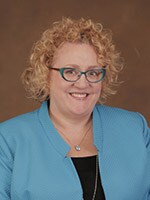In the face of COVID-19, communities across the globe quickly adopted telehealth as a safe, convenient care delivery model. Clinician acceptance grew exponentially as the home became a new base for care. As the pandemic continues to disrupt the way care is delivered, healthcare leaders look toward finding stable ground and cementing telehealth for years to come. To help guide this process, three Philips medical leaders weighed in on both the opportunities and challenges ahead for telehealth’s long-term sustainability – Huiling Zhang, Chief Medical Officer of Connected Care, Cindy Gaines, Clinical Transformation Leader of Connected Care, and Adam Seiver, Medical Leader for Therapeutic Care and Hospital Respiratory Care. The resounding sentiment? For telehealth to last, it will take a clinical transformation – workflows need to be reconfigured, the industry will collaborate in new ways, and providers must continuously adapt to shifting dynamics and ways of working. Q1: Telehealth use skyrocketed during the pandemic. In your eyes, what is the main obstacle to its long-term adoption? Huiling Zhang (HZ): First of all, we need to stop thinking of telehealth as one-off video chats or phone calls with one’s provider. As the location where care takes place becomes more flexible, and our dependence on technology grows to support these various settings, telehealth can serve an important role as a more operationalized form of care delivery. Just like in-person visits, telehealth should be fully integrated with the day-to-day operations of a healthcare organization – from scheduling appointments, to billing and payments, to where to deploy staff according to need. All parties, including providers, payers and patients, need to have confidence that telehealth, when deployed and used properly, can be as effective as an in-person visit, and put into practice to fully integrate it into clinical and operational workflows to optimize location-independent care delivery.. Cindy Gaines (CG): Any digital transformation that happens this quickly has a risk of becoming a “fad,” so there’s work to do to ensure that is not the case. There is a real threat that telehealth could become the next EHR adoption of the early 2000s. While the “Meaningful Use” push promised to advance health information management, over time these solutions evolved to be disparate sources of administrative burden, largely because organizations did not invest the time to modify workflows to incorporate the technology and gain the efficiencies and advantages. The same risk exists for telehealth – while its promise lies in its convenience and improved access, if workflows don’t change, it will not stick. To avoid history repeating itself, we need to get comfortable blending the old with the new and hire workflow experts and technology navigators devoted to the transition and workflow design. Adam Seiver (AS): If we’ve learned anything from healthcare’s digitization over the years, it’s that it is not just about the technology – it is about the people, processes, and incentives in place to support it. There is a risk that telehealth’s adoption is more of a technology “push” than an underlying problem “pull.” Telehealth is not just the icing you put on top; it needs to be mixed into the batter. If we look at tele-critical care as an example, for the eICU to be an effective and collaborative model for monitoring our sickest patients, it requires a redesign of critical care workflows, not just a technology installation. Q2: What is the most critical piece of hardwiring telehealth long-term? HZ: While telehealth made a name for itself in 2020, we now need to ensure our informatics backbones mature with these solutions, activating a secure flow of data where and when it’s needed. Telehealth’s stake in the future of patient care depends on interoperable solutions that inform data-driven decisions. Supporting patients in a variety of care settings requires robust data-sharing infrastructures, establishing a standard for disparate systems to more easily talk to one another, and reevaluating restrictive privacy policies that fit a brick-and-mortar, transactional care model. The right financial incentive and payment reforms will also be critical for the long-term hardwiring of telehealth. CG: For me, telehealth’s success lies in transforming how we talk about healthcare. We need to eliminate the word “discharge” from our vocabularies. That word is meant for episodic, sick care, not a continuum of care. Remote patient monitoring via wearables or connected devices isn’t just for after discharge to prevent a readmission – it’s for giving the provider eyes into a patient’s lived environment for proactive health management, and for giving patients a passive, convenient way to stay tethered to their providers. AS: Collaboration and connectivity from bedside to webside – and the role technology plays in enhancing it – is a big part of securing telehealth’s longevity. For tele-critical care, this means the virtual and bedside staff need to feel they are a part of the same team, supporting each other and enhancing care for the patient. With this mentality, determining which tasks are best managed remotely and which are best done at the bedside to maximize the team’s time, energy and resources is cooperative instead of competitive. Beyond this, 5G and the enhanced connectivity and mobility it enables holds a lot of promise in ensuring telehealth remains a convenient, go-to tool for both providers and patients.
Q3: How do you envision telehealth changing interpersonal dynamics of care and collaboration more broadly? HZ: The way patients approach their healthcare is changing, and the way in which we communicate and record health events, both big and small, needs to change with it so we can truly engage patients in their own care. Today’s patients have a stronger say about their care, and if insurance continues to cover telehealth post-pandemic, we give them even more choice. As this power continues to shift and patients engage with healthcare’s growing access points, we need to ensure our infrastructures help our providers stay informed and connected with all healthcare interactions or else be left in the dark. CG: The traditional provider-patient relationship was already shifting before the pandemic and the challenges of this year have escalated the importance of providers’ determining how to accommodate consumers’ evolving needs. Whether a patient prefers in-person care, or would rather communicate via text message, providers need to personalize their approach to match how patients wish to access their care. Beyond this one-on-one relationship, telehealth will also change how providers collaborate with other players in the space to bridge data gaps – Because today’s patients interact with multiple convenient care models and telehealth services, there’s a growing risk of disparate data. AS: The in-person physical exam has been dying for a while, and telehealth only accelerates this shift. It’s no secret that younger generations prize convenience, and we need to find the balance between convenient care and quality care – if we prioritize convenience, there could be things we miss along the way, or as Cindy and Huiling suggested, it could lead to fragmented care. But, the increased power placed in patients’ hands when it comes to where and when they seek care could ultimately be a good thing by improving accountability and engagement. Q4: In a few words, what is your hope for telehealth’s future? HZ: We cannot overlook the importance of securing long-term reimbursement for telehealth. While the pandemic spurred emergency use authorization and temporary permissions for reimbursement, we cannot revert back to pre-COVID-19 payment structures. My hope is that telehealth has made a big enough splash in 2020 that it can be put on equal-footing as traditional in-person care, and appropriately funded. CG: We talk about creating a continuum of care, but we still don’t function that way. My hope is that telehealth’s surge during COVID-19 will be the push we need to move from sporadic touch points to truly engaging with patients and effectively managing their care from home, turning the home into an epicenter for care delivery. AS: My hope is that telehealth helps to accelerate decentralized critical care so that any patient can receive the proper care in a convenient manner. Patients like to be treated close to their homes, but community hospitals don’t always have the resources needed. Telehealth can help match patients who might be best treated by an academic center and support regionalized critical care delivery. Minor updates to this article were made on February 25, 2021, to reflect the ongoing nature of the COVID-19 pandemic.
Share on social media
Topics
Contact

Anna Hogrebe
Philips Global Press Office Tel: +1 416 270 67 57
You are about to visit a Philips global content page
ContinuePhilips medical leaders:

Huiling Zhang
Chief Medical Officer of Connected Care

Cindy Gaines Transformation Leader of Connected Care

Adam Seiver Medical Leader for Therapeutic Care and Hospital Respiratory Care

